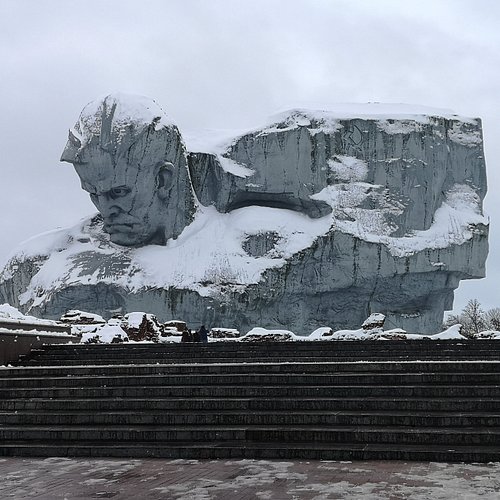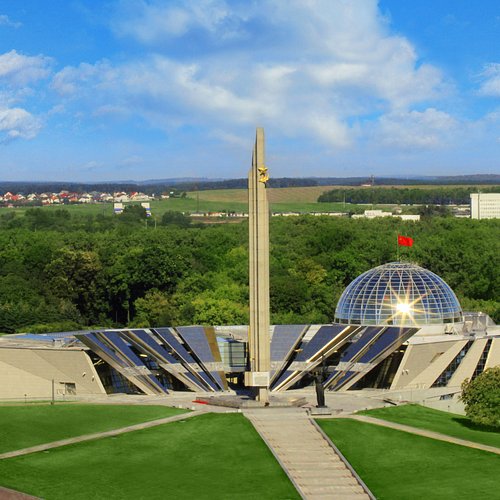Top 8 Military Museums in Belarus, Belarus
Discover the best top things to do in Belarus, Belarus including Memorial Complex Brest Hero-Fortress, Museum Battle For Dnepr, Military History Museum of Suvorov, Gomel Regional Museum of Military Glory, The Historical and Cultural Complex Stalin Line, Polotsk Museum of Medieval Knighthood, Belarusian State Museum of the History of the Great Patriotic War, Manor "House of Bagration".
Restaurants in Belarus
1. Memorial Complex Brest Hero-Fortress
Overall Ratings
5.0 based on 1,230 reviews
The Brest Fortress (the Brest-Litovsk Fortress) was one of the fortresses built in 1830-40s to strengthen the western borders of the Russian Empire. It was commissioned on April 26, 1842 and was considered as one of the strongest European fortresses of that period. However it wasn't tested in real battles for a long time. During the World War I the garrison was evacuated according to the order of the High Command and the Fortress was used as a Headquarters of Kaiser's Germany Eastern Front. After October Socialist Revolution Russia became Soviet. On the territory of the Brest Fortress the Soviet government signed the Brest-Litovsk Peace Treaty with Germany and its allies (March 3, 1918), declaring the end of the WWI between them. After the Soviet-Polish war the Fortress ceded to Poland and was used as a military cantonment of the Polish Army. When the World War II erupted the Polish garrison was defending the Fortress from German aggressors for 3 days, but had to leave it. In September 1939 the Brest Fortress became Soviet. Two military divisions of the Red Army were stationed here. The Western Bug river flowing through the Fortress became a new borderline between Germany and the Soviet Union. On June 22, 1941 Germany invaded the USSR all along its borders. Units of Wehrmacht attacked the Fortress at 4.15 in the morning and surrounded it by 9 a.m. About 4.000 Soviet soldiers and commanders had to engage in battle with the enemy, having no opportunity to leave the besieged Fortress. The Fortress' Defence was the defence of its separate centres without Headquarters. Only in Citadel (the Central island) the defenders managed to create the united command on June 24, 1941. By the end of June most of the Fortress' territory was controlled by the Wehrmacht, though some defence sectors fought on till July, 12 (the Eastern Redoubt). The last known defender of the Brest Fortress Major P.Gavrilov was taken prisoner of war on July 23, 1941 - on the 32nd day of the war. But there were also other defenders. One of them used his bayonet to the rifle to write his last words on the brick wall of the barracks: "I'm dying, but I'm not surrendering. Farewell to the Motherland. 20/07/41".The Brest Fortress abundantly poured with the blood of its defenders became a sacred place for the people of the USSR. It became a symbol of courage, fortitude and military valor of a Soviet soldier. For the mass heroism shown during the defence, it was awarded the title of the Hero-Fortress (May 8, 1965). To commemorate the perished defenders it was decided to build a Memorial Complex. It was designed and constructed by the group of Soviet architects and sculptors with A.Kibalnikov at the head. The opening ceremony was held on September 25, 1971. The Memorial Complex "Brest Hero-Fortress" is a national shrine of the Republic of Belarus. More than 21 mln people from 120 countries around the world have already visited it. So driving through Brest be sure to see it!
Reviewed By cooker3000 - Dublin, Ireland
The most impressive place to visit in Brest. There are churches, museums and giant monuments so worth a few hours to wander around.
2. Museum Battle For Dnepr
3. Military History Museum of Suvorov
4. Gomel Regional Museum of Military Glory
5. The Historical and Cultural Complex Stalin Line
Overall Ratings
4.5 based on 224 reviews
The Historical and Cultural Complex “Stalin line” is 26 km from the Minsk and 6 km from Zaslavl town. The Historical and Cultural Complex “Stalin line” was founded on 60-th anniversary of soviet people Victory in the Great Patriotic war (IIWW) and it was opened on the 30th of June 2005 in memory of soldures who defend Minsk in 1941. Main museum exposition is related to first days of the Great Patriotic war. “Stalin line” is the chain of defensive installations along the former USSR frontier from Karelian Isthmus to the shores of Black sea. It consisted of twenty three fortified regions including more than four thousand permanent weapon emplacements (pillboxes). All are made from high quality fortification concrete. Four fortified regions – Polotsk, Minsk, Slutsk, Mozyr – were at territory of Belarus in total nine hundred sixty-six pillboxes. Fortified regions formed a united defense line. The entire line of the fortified regions had been built since 1928 till the autumn 1939. Minsk’s fortified region No 63, which was 140 kilometers long included 327 pillboxes. On 26-28th of June 1941 at the lines of the Minsk`s fortified region there was fierce fighting with the attacking units of the German army. The Military-museum exposition was created and planed, so that from first steps a visitor could feel spirit of that time. The opportunity to be absorbed in history is one of the distinctive features of the museum. The basis of the exposition is original pillboxes. All entrenchments and communication trenches with rifle-pits for machine-guns and with blindages and recesses for ammunition were reconstructed according to the year 1940 designs. There is a park of military equipment of different years in the museum. It is the most complete exposition of military equipment in the Republic of Belarus, which was adopted by USSR army in different years, beginning from the Second World War. The museum territory is organized for reenactments of IIWW and modern fights which are planed like special events and happen approximately 10-14 times a year.
6. Polotsk Museum of Medieval Knighthood
7. Belarusian State Museum of the History of the Great Patriotic War
Overall Ratings
4.5 based on 912 reviews
The Belarusian State Museum of the History of the Great Patriotic War is the greatest national depository of material and spiritual monuments of the 1941-1945 war history. Open: 10.00 – 18.00. Day off: Monday
Reviewed By B1714D - Belgrade, Serbia
I've been in several such museums throughout Europe, including the Moscow's one and Kiev's only few days before and I can tell you - this one in Minsk is by far the best. The musuem is little bit away from other Minsk attractions, but still easy reachable by taxi, bus or even walk-around 30 min from the center. Best layout and panorama of the museum is from a residential block hill diagonal from the musuem (this TA front pic is shot from there). Despite the Sovietish exterior with huge concrete blocks and obelisk rising, the interior is state of the art, very modern. The museum describes the pre WWII years throughout the entire war till its end. There's abundance of artifacts - from personal items, memorabilia, newspapers, weapons, life size original machine guns, big guns, tanks, planes to high tech 3D dioramas, touch screens, etc... Highlight is the ending Victory hall in the dome (this one's again little bit Sovietish, but hey, you're in that part of the world). Entrance fee is cheap (cannot remember exactly, around 5 Euros), I didn't take the audio guide (don't like them as they're very time consuming), and you don't need it as a lot is explained also in English. There're clean restrooms, coats wardrobe and a souvenir shop. Count on around 2 hrs for a visit.







